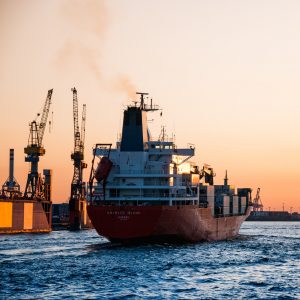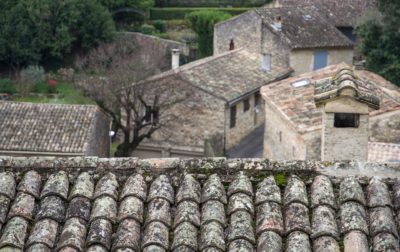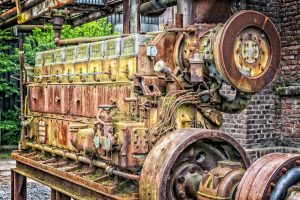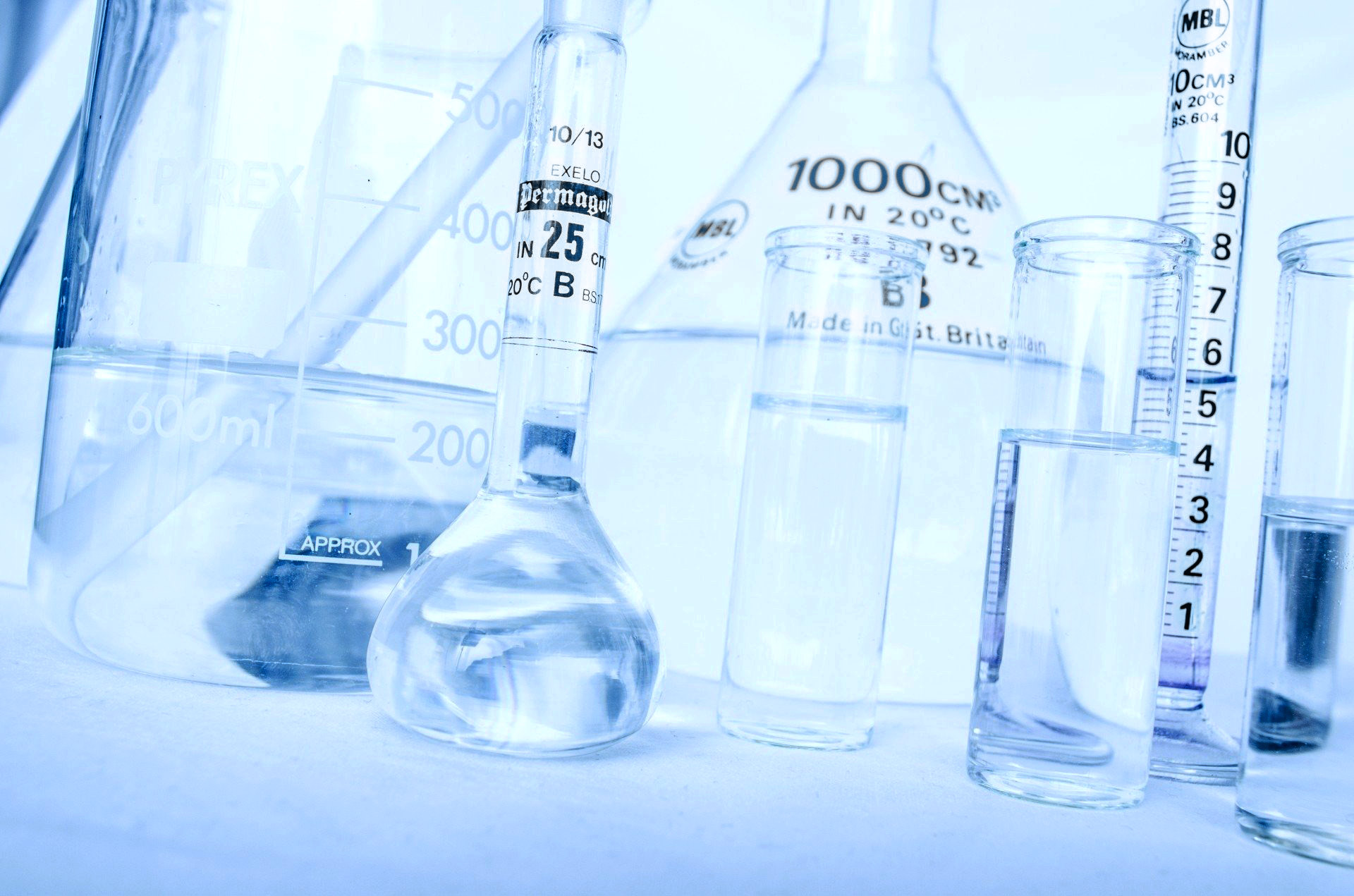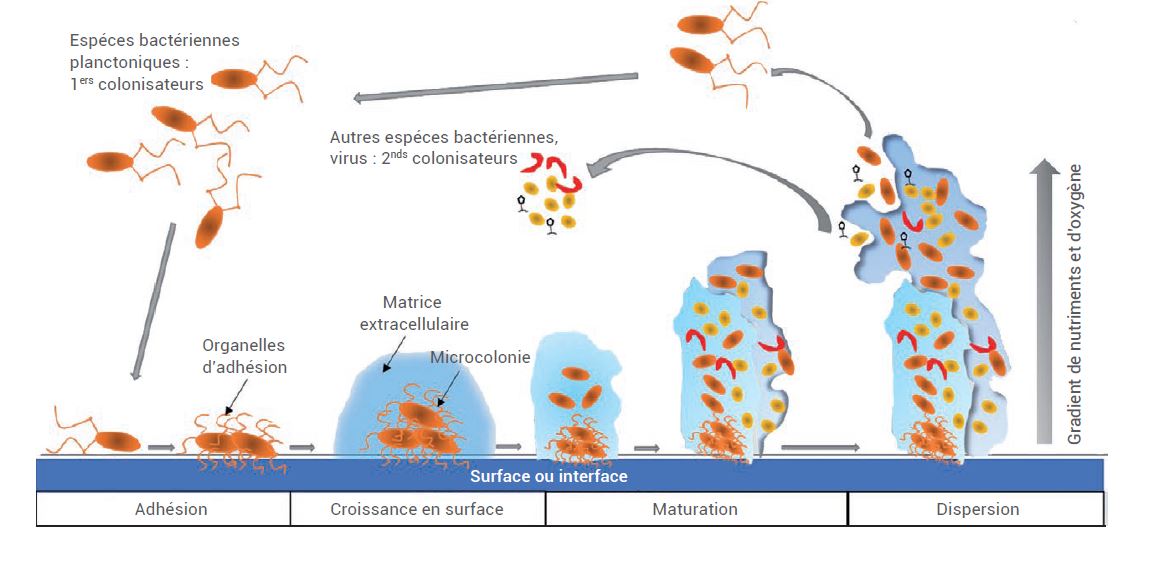Since the discovery of biofilms, it has been known that microorganisms are not only suspended in water, but also colonize a wide variety of surfaces, including living tissue, pipes in drinking and industrial water systems, or any other medium found in soil or aquatic environments. The growth of microorganisms in the form of biofilms predominates in all aquatic systems that are part of natural ecosystems. On a larger scale, biofilms are necessary for the survival of bacteria on the planet and the continuity of the food chain.
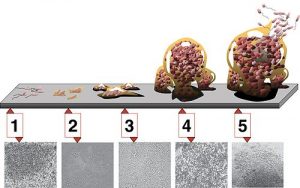
Biofilms develop in 5 stages:
1- Reversible adhesion of bacteria from the aqueous phase to a surface
2-Irreversibility of membership
3-Formation of microcolonies
4-Maturation of biofilm
5-Colonization of new surfaces
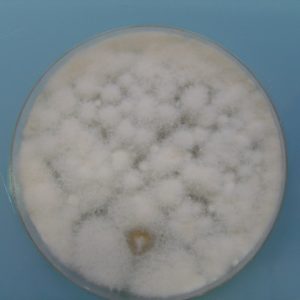
The analysis of a biofilm is done by inoculation of a defined volume on a Petri dish with nutrient agar which shows the development of bacteria, filamentous fungi and yeasts. This allows after incubation to quantify the population of cultivable microorganisms present in the analyzed sample. In this way it is possible to differentiate between biofilm and microorganism-free organic matter.
What are the activities concerned with biofilms and the problems encountered?
Biofilm is a problem in many industrial sectors, particularly in metallurgy where biofilm formation on metals can lead to corrosion problems. In combination with metal surfaces, biofilms of anaerobic bacteria cause corrosive chemical reactions that can damage, clog and permanently contaminate fluid circulation systems.
Many industrial sectors are affected by biofilm problems, for example:

